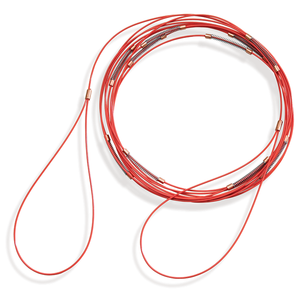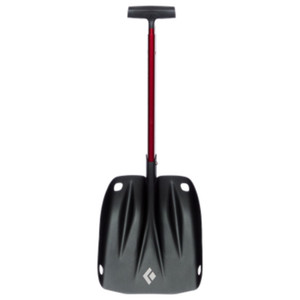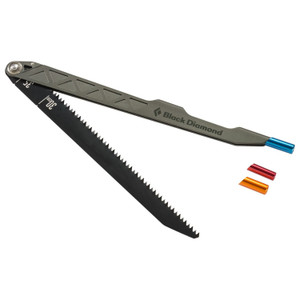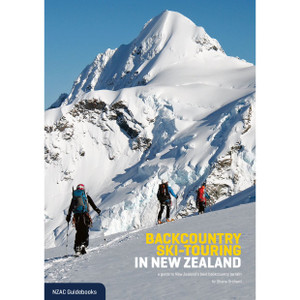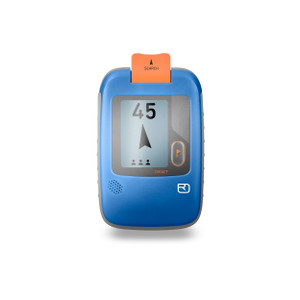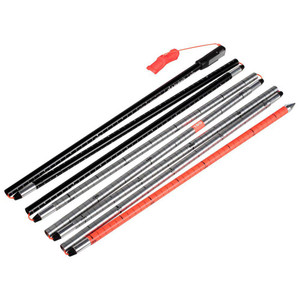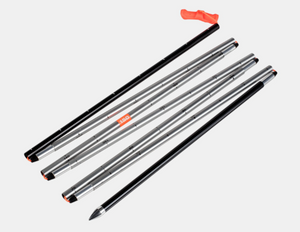Avalanche Safety
Avalanche safety gear is essential when venturing into the backcountry, as avalanches are a serious risk in mountainous terrain. This equipment helps you stay safe, as well as increases your chances of survival and recovery if an avalanche occurs. There are three main pieces of avalanche safety gear that everyone should have when skiing, snowboarding, or touring in avalanche-prone areas:
1. Avalanche Beacon (Transceiver)
-
What It Is: An avalanche beacon (also called a transceiver) is a device that transmits and receives signals. When you're buried in an avalanche, it sends out a signal that rescuers can pick up with their own beacons to locate you quickly.
-
How It Works:
-
Sending Mode: The beacon continuously sends a signal that can be detected by other beacons in the area.
-
Receiving Mode: In the event of an avalanche, you switch your beacon to receiving mode so you can track signals from others (or from someone who is buried).
-
-
Important Features:
-
Multiple Burial Detection: Some modern beacons can track multiple signals, which is critical if there are multiple people buried.
-
Range: Look for a beacon with a good range (generally 40 meters or more).
-
User-Friendliness: Ensure the beacon is easy to use and intuitive for quick deployment.
-
Digital Display: Many modern beacons have a display showing distance and direction, making it easier to pinpoint a buried person.
-
2. Avalanche Probe
-
What It Is: An avalanche probe is a long, collapsible pole used to probe the snow to find the exact location of a buried person after the beacon has directed you to the area.
-
How It Works: Once you've located the approximate burial spot with your beacon, you use the probe to precisely pinpoint where the victim is buried. The probe is stuck into the snow at intervals to help find the depth and position of the victim.
-
Key Features:
-
Length: Probes typically range from 240 cm to 320 cm, with longer probes being more effective for deeper snow.
-
Material: Look for probes made from lightweight, strong materials (like aluminum or carbon fiber).
-
Markings: Probes often have depth markers to help you measure how deep the person is buried.
-
Speed: A good probe should deploy quickly and be easy to assemble, especially in high-stress situations.
-
3. Avalanche Shovel
-
What It Is: A sturdy shovel is essential for digging someone out if they're buried in an avalanche. A good shovel will help you move snow efficiently to rescue a buried person.
-
How It Works: After locating the person with your probe, you’ll need to dig down to reach them. The shovel is crucial for moving large amounts of snow and rescuing someone in the shortest time possible.
-
Key Features:
-
Blade Size: A shovel with a larger blade will help you move more snow. It’s generally recommended to go for a blade length of around 30 cm (12 inches).
-
Material: Look for a strong, lightweight material (like aluminum or reinforced plastic) to make digging easier.
-
Handle: The handle should be adjustable (telescoping) for ease of use and storage, and ergonomically designed for comfort.
-
Shape: A shovel with a slightly curved or tapered blade is better for moving snow efficiently.
-
4. Additional Safety Gear (Optional but Highly Recommended)
While the three primary pieces of avalanche safety gear (beacon, probe, and shovel) are essential, there are a few more tools and accessories that can improve your chances of survival in avalanche-prone terrain:
-
Airbag Backpack:
-
What It Is: An airbag backpack contains an inflatable airbag that deploys when activated, helping you stay near the surface of an avalanche by increasing your buoyancy. It's one of the most effective tools in preventing burial or reducing trauma.
-
How It Works: When an avalanche occurs, you pull a trigger on your backpack, and the airbag inflates to help keep you on top of the snow.
-
-
Avalanche Rescue Tool Kit:
-
These are compact tools (often included with the backpack) that could help in avalanche rescue situations, such as a multi-tool with a whistle, flashlight, or emergency medical kit.
-
5. Training and Practice
Even with the best avalanche safety gear, training is essential. Knowing how to use your equipment properly and how to react in an avalanche emergency can make the difference between life and death.
-
Many local mountain guiding companies offers courses to teach you how to safely navigate avalanche terrain and use avalanche safety gear.
-
Practice: Regularly practice searching for buried objects with your beacon, probe, and shovel in controlled environments. Practicing can make you more efficient in an emergency and help reduce the time spent rescuing someone.
Are you looking to get into backcountry skiing or snowboarding? If so, make sure you have the right gear, and take the time to practice with it! Also, we can help you find specific gear recommendations if you'd like.



